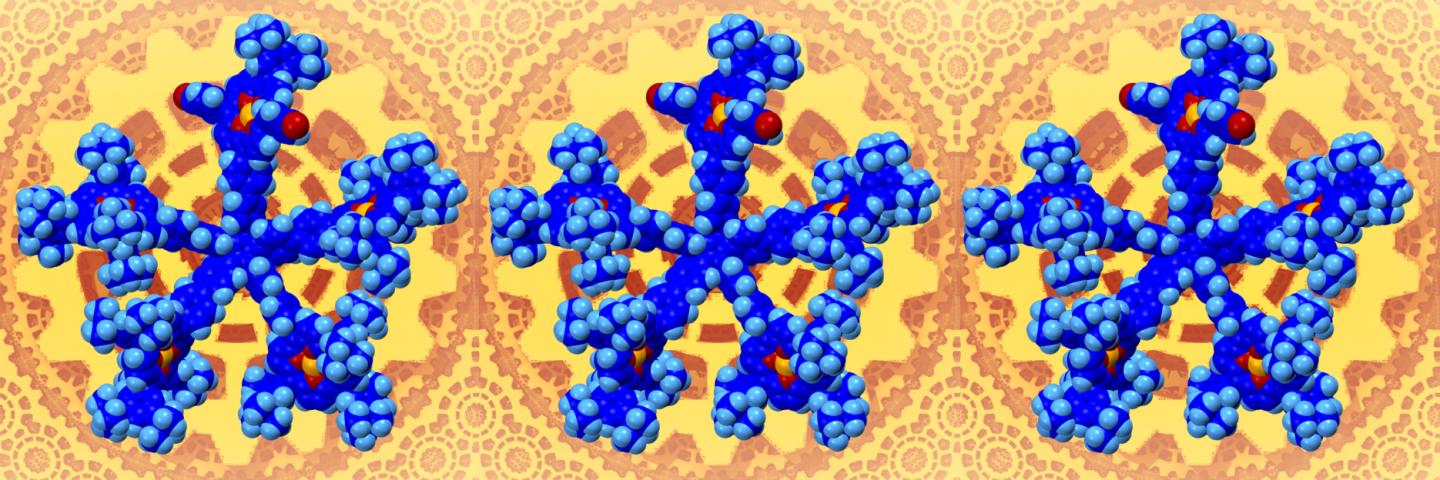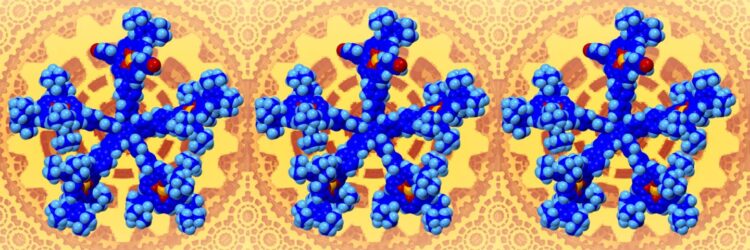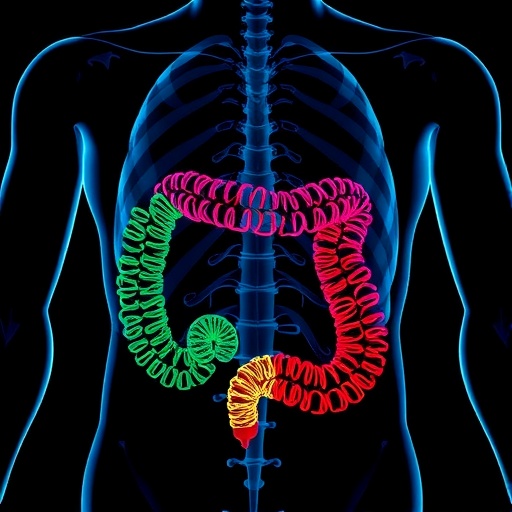Researchers at Nara Institute of Science and Technology, Japan, in partnership with research teams at University Paul Sabatier, France, are advancing the science of molecular-scale gear trains for transmitting rotational force

Credit: Gwénaël Rapenne (NAIST and UPS)
Ikoma, Japan – Gear trains have been used for centuries to translate changes in gear rotational speed into changes in rotational force. Cars, drills, and basically anything that has spinning parts use them. Molecular-scale gears are a much more recent invention that could use light or a chemical stimulus to initiate gear rotation. Researchers at Nara Institute of Science and Technology (NAIST), Japan, in partnership with research teams at University Paul Sabatier, France, report in a new study published in Chemical Science a means to visualize snapshots of an ultrasmall gear train – an interconnected chain of gears – at work.
NAIST project leader Professor Gwénaël Rapenne has devoted his career to fabricating molecular-scale mechanical devices, such as wheels and motors. Researchers recently designed a cogwheel for a molecular gear train but currently have no means to visualize the gears in action.
“The most straightforward way to monitor the motion of molecular gears is through static scanning tunneling microscopy images. For these purposes, one of the teeth of the cogwheels must be either sterically or electrochemically distinct from the other teeth,” explains Rapenne.
The researchers first created a molecular cogwheel comprising five paddles, where one paddle is a few carbon atoms longer than the other four paddles. However, as they showed last year, differences in paddle length disrupt the coordinated motion along the gear train. Thus, differences in paddle electrochemistry are a more promising design approach but synthetically more challenging.
“We used computational studies to predict whether electron-withdrawing units or metal chemistry could tailor the electronic properties of a paddle, without changing paddle size,” says Rapenne. Such tailored properties are important because one can observe them as differences in contrast by using scanning tunneling microscopy, and thereby facilitate static imaging.
“Our pentaporphyrinic cogwheel prototypes contained one paddle with either a cyanophenyl substituent or a zinc – rather than nickel – metal center,” explains Rapenne. “Various spectroscopy techniques confirmed the architectures of our syntheses.”
How can researchers use these cogwheels? Imagine shining a highly focused beam of light, or applying a chemical stimulus, to one of the gears to initiate a rotation. By so doing, one could rotate a series of cogwheels in a coordinated manner as in a conventional gear train, but on a molecular scale which consists in the ultimate miniaturizatio of devices. “We now have the means to visualize such rotations,” notes Rapenne.
By using this development to carry out single-molecule mechanics studies, Rapenne is optimistic that the broad research community will have a powerful new design for integrated nanoscale machines. “We’re not there yet, but are working collaboratively to make it happen as soon as possible,” he says.
###
Resource
Title: Desymmetrised pentaporphyrinic gears mounted on metallo-organic anchors
Authors: Seifallah Abid, Yohan Gisbert, Mitsuru Kojima, Nathalie Saffon-Merceron, Jérôme Cuny, Claire Kammerer & Gwénaël Rapenne
Journal: Chemical Science
DOI: 10.1039/d0sc06379g
Information about Project Leader Rapenne’s lab can be found at the following website: https:/
Media Contact
Takahito Shikano
[email protected]
Related Journal Article
http://dx.





